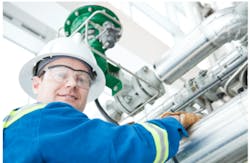Part X: A Coriolis Mass Flowmeter Emerges As An Alternate Solution
This is the final article in a series based on the troubleshooting of a mysterious unit shutdown due to flowmeter performance problems.
RELATED: Read Part I in the “Troubleshooting Operational Issues” Series
RELATED: Read Part II in the “Troubleshooting Operational Issues” Series
RELATED: Read Part III in the “Troubleshooting Operational Issues” Series
RELATED: Read Part IV in the “Troubleshooting Operational Issues” SeriesRELATED: Read Part V in the “Troubleshooting Operational Issues” Series
RELATED: Read Part VI in the “Troubleshooting Operational Issues” Series
RELATED: Read Part VII in the “Troubleshooting Operational Issues” SeriesRELATED: Read Part VIII in the “Troubleshooting Operational Isssues” Series
RELATED: Read Part IX in the “Troubleshooting Operational Isssues” Series If you’ve followed this column for most of 2014, you know that what should have been a liquid ammonia stream to the feed plant became problematic due to the occurrence of bubbles of ammonia gas. These bubbles caused an ultrasonic flowmeter in a unit to indicate zero flow and caused the reactor to scram (shut down) under warm operating conditions. The source of the bubbles was traced back to the pressure drop associated with a control valve located at the exit of the liquid ammonia tank farm.David W. Spitzer is a regular contributor to Flow Control magazine and a principal in Spitzer and Boyes, LLC offering engineering, seminars, strategic marketing consulting, distribution consulting and expert witness services for manufacturing and automation companies. Spitzer and Boyes is also the publisher of the Industrial Automation Insider.
Mr. Spitzer can be reached at 845 623-1830 or www.spitzerandboyes.com. Click on the "Products" tab to find his "Consumer Guides" to various flow and level measurement technologies.
About the Author
David W. Spitzer
David W Spitzer’s new book Global Climate Change: A Clear Explanation and Pathway to Mitigation (Amazon.com) adds to his over 500 technical articles and 10 books on flow measurement, instrumentation, process control and variable speed drives. David offers consulting services and keynote speeches, writes/edits white papers, presents seminars, and provides expert witness services at Spitzer and Boyes LLC (spitzerandboyes.com or +1.845.623.1830).

